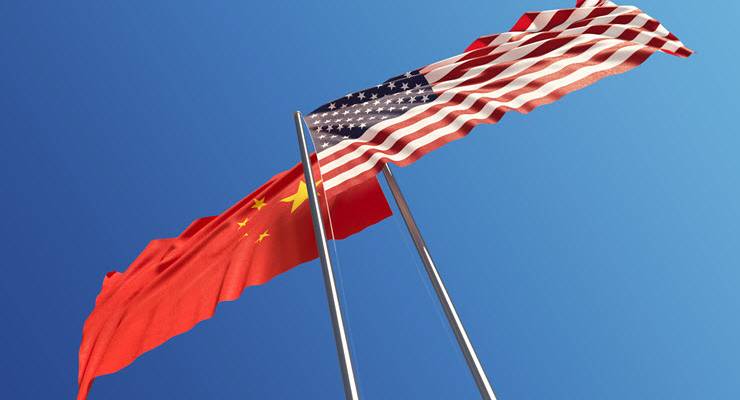
Earlier this month China struck another blow in its escalating trade war with the United States, issuing a travel advisory warning to its emerging “rival”. It was targeted squarely at the US$1.6 billion tourism industry in the country and said: “Recently, shootings, robberies and theft have occurred frequently in the US.”
Western countries, being the places significant numbers of people have traditionally had money to travel, have been using travel advisories for decades to warn their citizens about other (usually developing) nations. While these are usually centered on safety, former diplomats from some European countries have admitted there is also a trade/economic element aimed at drying up tourism funds for despotic regimes. Think Zimbabwe under Robert Mugabe and, going back a few years, Myanmar and various South American nations.
So what are we to think of China’s US travel warning? It’s hard to determine exactly what factors are at play when tourist numbers from a country that issues a travel warning against another decline. The fact is that Chinese tourism to the US was already on the slide. According to the US National Travel and Tourism Office, 2.9 million Chinese visited the United States in 2018 (sharply down from 3.2 million in 2017).
“It’s not getting better in 2019,” Adam Sacks, president of consulting company Tourism Economics, told The New York Times. “The risk is that it gets worse. If you look at the previous decade, Chinese travel increased at an annual average growth rate of 23%. Then it stops on a dime and begins to retrench in 2018.”
The New York Times article pointed the finger at the trade war, but falling Chinese tourism is just as likely to be associated with the country’s economy which was faltering before the trade war amped up. The first thing that consumers rein in when they have fears about macro-economic conditions is discretionary spending on things such as retail and travel.
The same Chinese tourism trends have been seen in Australia with the latest figures released by the Australia Bureau of Statistics for April showing a 6.1% fall in short-term arrivals from China compared to the same month last year. The April figure was 1.7% lower than March.
Chinese tourism to other major destinations such as Hong Kong and New Zealand, where no warnings have been issued or trade tensions exist, have also been falling. Chinese tourists seem to be looking for cheaper holidays, with numbers to Cambodia and Indonesia surging.
There is not a huge amount of trust between China’s people and its authoritarian government, and many China experts don’t see middle-class Chinese putting off their trip to LA or New York because the government warns them it’s dangerous. The sector of tourism that is more likely to be affected is the much cheaper tour group end of the market.
But that’s not to say that government advisories aren’t effective at all; they have a great deal of influence in the crucial education sector. International students were worth $36.6 billion to Australia last year, according to the ABS.
Veterans in the sector recall Indonesia issuing such a warning against Australia about 15 years ago, when it was a major (percentage-wise) source of foreign students, which dented Indonesian student numbers.
Since then, the industry has exploded with a record 613,000 foreign students now at Australian schools and tertiary institutions. China has become the sector’s biggest customer, providing about 30% of the entire foreign student cohort. But its numbers, the University of NSW Vice Chancellor Ian Jacobs warned in March, are about to start declining and will continue to do so.
The latest government data shows that the number of Chinese students commencing courses in the first semester of 2019 was 1.5% higher than last year. This is down from year-on-year growth of 7.4% in 2018, 17% in 2017, and 19.8% in 2016.
There are many factors that could contribute to these slowing Chinese student numbers including improving Chinese universities and a demographic swing in the country towards older people due to the one-child policy. However industry insiders, who track the lead indicator of feeder courses for Western universities, say the 2017 student warning issued by the Chinese government was a key factor in the decline, saying it took at least 12 months for effects of any triggers for an up or down swing in tertiary student numbers to show.
The 2017 warnings came amid a spate of violence against Chinese students, but this was also just weeks after formal complaints were issued about then prime minister Malcolm Turnbull naming China in parliament as he introduced new counter-espionage laws. There was a rising media focus on Chinese influence in Australia — including university students.
It’s undeniable that China is well aware of the sheer economic heft of its population and knows how that power can be wielded. Issuing warnings about travel or student safety are handy tools to be used when a country falls out with another. It is a way of saying, as one former diplomat put it, “we can fuck with you in all sorts of ways”.








I know they’re doing it for political purposes, but they have a point, and it’s something that should give all of us pause. Today is the 165th day of the year, two days ago America had their 169th mass shooting of the year. It took place on the 12th of June in Charlotte, North Carolina and, as with most mass shootings in the US, was virtually ignored by the media.
According to gunviolencearchive.org so far this year there have been 24,090 shooting incidents resulting in 6,350 deaths. 273 Children under 11 and 1,217 teenagers have been killed or injured. There have been 777 home invasions. 138 Police officers shot or killed.
Who’d want to go to America.
I’d much rather have less Chinese tourists than receiving their nukes, given the embarrassing target chosen to become.
We can’t be rid of that target (Pine Gap nor its little brother NW Cape) but we could, given the government claims to believe in market forces, at least charge a market rent – what price US security, how many tens of BILLIONS is it worth?
It cost us a government in 1975.
All good. Perhaps now our universities will open up places for Australian students, rather than prostitute themselves, and their academic standards, in pursuit of the almighty foreign student dollar.
Of course that would mean our governments increasing funding for tertiary education for our children and grandchildren, while forgoing that vast pool of cheap exploitable “student” visa labour which helps drive down the wages of our children and grandchildren.
Which is why, under the current neolib ideologues, it won’t happen.